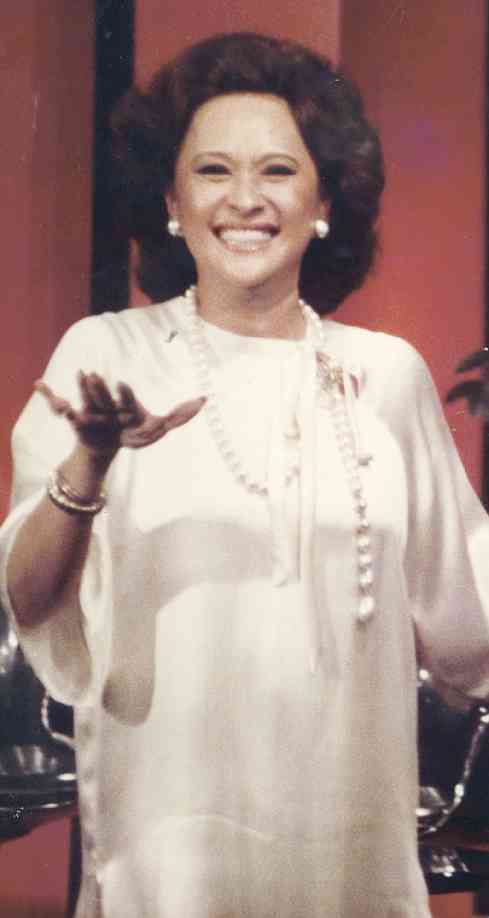Dangerous and heroic times recalled

MANAHAN. Much more to her than met the eye.
WE HAVE the bad habit of forgetting the important lessons of history, so we’re glad that the Inquirer has come up with recollections about the dark and dangerous years of martial law. My own inputs:
I was staying with my Chronicle colleagues, Edmund and Meiling Sicam, at the time. The day after the imposition of martial law, we drove to the office as usual—only to find it locked and surrounded by many soldiers. We all lost our jobs in one fell swoop!
What to do? In my case, after the only “official” newspaper, The Daily Express, was put up, somebody “up there” who liked my work tapped me as entertainment and arts editor. However, I was “opposition,” so I suggested my friend, Manny Pichel, for the position, while I wrote a column.
In activist theater, I had done productions with Behn Cervantes and we continued coming up with them, albeit in less obvious form and unction.
Whenever my help was sought, I harbored activists on the run in my small cottage at UP Village, which Behn also used for clandestine meetings with his “cultural” group.
In the ’80s, “Two for the Road,” our TV show with Elvira Manahan and director Maria V. Montelibano, became more topical and “engaged” in the topics and personalities it featured, eliciting the displeasure of the regime. Things came to a head in 1983, when Ninoy Aquino was assassinated.
15-minute eulogy
“Two for the Road” was the only TV show that paid tribute to the fallen hero, by way of a 15-minute eulogy, which I scripted and Maria most movingly visualized. That got us into even more trouble, prompting a five-hour confrontation with the censors, who wanted to fully control our show, with all program material to be taped and approved before showing. Elvira, Maria and I refused to agree to that onerous condition. Perhaps fearing that the issue could have unsavory “international” repercussions, the censors stepped back and just gave us a strong “warning.”
During all this time, I was a board member and section editor at “Mr. & Ms.” magazine, which similarly became more engaged, leading to the creation of the Philippine Daily Inquirer.
In the theater, aside from acting in Behn’s activist productions, I directed some of them, as well, like “Satirika” and “Mapait na Asukal” for the CCP’s Bulwagang Gantimpala. And, when push came to shove at Edsa, I was present and accounted for, along with many other arts and media colleagues, luminously led by June Keithley of Radyo Bandido fame.
Right after Edsa, Maria tapped me to host one of the first programs telecast from the newly liberated ABS-CBN studios. It was a panel discussion on education featuring some important panelists, and it was a thrill to do the show at the time, with (friendly) troops still making their presence felt, “just in case.”
Those were dangerous, halcyon and heroic times and our prayer is that all Filipinos, especially the youth, will never have to experience them again. That will happen—if we don’t forget!
‘Aunor analogy’
In the ’70s, Nora Aunor was one of the unknown singing talents discovered by the “Tawag ng Tanghalan” talent tilt. In a striking case of deja vu last month, we watched the revived singing tilt on “It’s Showtime,” and saw another similarly Pinay-looking unknown, Marielle Montellano, sing her way to victory.
To further underscore her likeness to Nora, she had a full and textured voice, sang strongly and feelingly, had expressive eyes—and even sported a facial mole!
Later, however, we caught the “Tawag” singing tilt again, but we were disappointed to see that she looked “different.”
Obviously, somebody had tried to “improve” her looks and projection, to make her come across as more “glamorous,” “styled” and “show biz”—with unfortunate and counterproductive results.
She was made to wear a sort of “bustier” with a short, wide skirt, and she looked more like a fashion victim than a fashion plate!
We hope that Marielle will realize that “glamming up” is wrong for her uniquely masa identification and appeal, and will fend off any further attempts, well-intended though they may be, to “improve” her projection and performing image.
With her voice and “accessible” look, she doesn’t need heavy makeup, curly hair, “hot” clothes and “packaging” to get to the top. In fact, they could end up compromising her appeal, and getting in the way of her exceptional promise and stellar success!